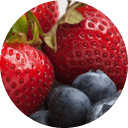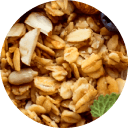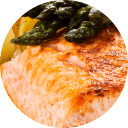

Being active and eating healthy during pregnancy each have lots of benefits — and doing both is even better. While it can be hard to get motivated if you’re not feeling your best, remember that small steps really do add up!
Learn how Nikia has found ways to have an active pregnancy — and how she’s making healthy food choices for herself and her baby.
How I move my way
When I found out I was pregnant, I had so many questions. I wanted to be as healthy as possible for myself and my baby — but I worried about what was safe. Would I still be able to ride my bike and do other things I enjoy?
Then my doctor told me that lots of activities are safe to do during pregnancy. In fact, I learned being active can even help me have a healthier pregnancy.
But I also quickly realized that getting active during pregnancy isn’t always easy. During the first 12 weeks, I felt nauseous and tired a lot. That meant I had to find ways to get active that I could do even when I wasn’t feeling great. So I started taking walks — some days very short ones! — and I found free prenatal exercise videos online.
I’m further along in my pregnancy now, but there are still days when I have low energy. I just do as much as I can, when I can. And I’ve noticed that even a few minutes of activity helps me feel better.

Pregnant people need a mix of physical activity to stay healthy
Moderate-intensity aerobic activity
Adults need at least 150 minutes each week of moderate-intensity aerobic activity — anything that gets the heart beating faster. And that’s still true during pregnancy! Lots of activities are safe — just avoid contact sports where you could fall or get hit in the belly, and be sure not to lie flat on your back after the first trimester.

Muscle-strengthening activity
Try to also do muscle-strengthening activities 2 days a week — for example, do squats or use water bottles as weights. Keeping your muscles strong can help your body cope with the demands of pregnancy. It can even make labor and delivery easier.
How I make every bite count
I never used to think too much about what I ate. But when I got pregnant, I wanted to make sure my baby and I were both getting what we needed to stay healthy. I was already taking prenatal vitamins, but my doctor also recommended adding more variety to my diet. Now I try to make sure I eat something from different food groups throughout the day. I’ve found that foods I don’t have to cook — like fruits, salads, and yogurt — are great, easy options on days when I’m low on energy and don’t want to make a big meal.
I also learned that seafood is great to eat when you’re pregnant. My doctor told me it helps my baby’s brain develop, and it’s a healthy source of protein. Seafood wasn’t a big part of my diet before, but now I try to eat it at least once or twice a week. I just make sure it’s cooked well, and I choose options that are lower in mercury — like salmon or tilapia. Canned salmon on a salad is my favorite!

When you’re pregnant, adding variety to your plate matters more than ever. Choose items from all 5 food groups to help make sure both you and your baby are getting the nutrients you need:





